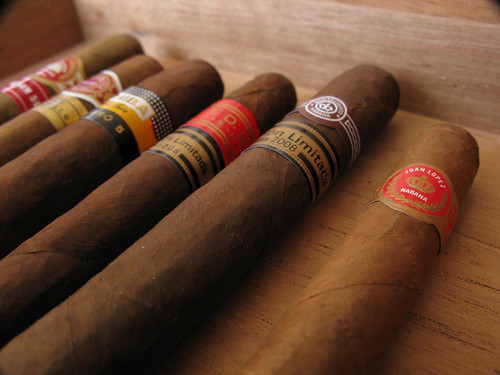The Dangers of Being Exposed to Cigar Smoke
We have all heard about the dangers of inhaling second hand smoke. Many people wonder if the dangers of inhaling cigar smoke are just as dangerous, or more. Unfortunately, it appears that being exposed to secondhand smoke from a lit cigar can be just as dangerous—or more—than regular cigarette smoke.
All secondhand smoke emitted by tobacco products are classified as environmental tobacco smoke. Environmental tobacco smoke refers to all the secondhand smoke released from tobacco products that are lit, such as cigars or cigarettes. Research indicates that the smoke from cigars and cigarettes releases many of the same types of irritants. Both cigar and cigarette environmental tobacco smoke contain nicotine, carbon monoxide, hydrogen cyanide, and ammonia. The environmental tobacco smoke from cigars and cigarettes also releases well-known carcinogens such as vinyl chlorine, benzene, arsenic, hydrocarbons, and nitrosamines. Cigars, because of their size, usually release more environmental tobacco smoke than cigarettes. Being around cigar smoke, then, can pose more of a health threat than inhaling secondhand smoke from a lit cigarette.
Even though both cigars and cigarettes release similarly toxic environmental tobacco smoke, there are some key differences between the two. These differences are related to the very different ways that cigars and cigarettes are manufactured. The production of cigars consists of a long process of fermentation and aging. During the production and fermentation process, large amounts of carcinogens are produced. Once a cigar has been fermented and aged, they are wrapped in a nonporous wrapper that keeps the cigar from burning too quickly. The fermentation process and nonporous wrapper both contribute to the high concentrations of carcinogens in the smoke of al it cigar. When a cigar is lit, the carcinogenic compounds produced during the fermentation process are released. The nonporous wrapper also contributes to an unclean burn that is high in carcinogens.
Another reason why cigars produce greater amounts of carcinogens is in their girth and length. Cigars are simply bigger than cigarettes. Their size allows them to release much more smoke, and in turn, much higher concentrations of toxins and irritants. Also, cigars are designed to be smoked much more slowly than regular cigarettes, and cigar smokers are encouraged to take their time and enjoy the relaxing experience. This results in longer smoke times, and obviously, the creation of much more smoke. It is advised for all non-smokers to avoid areas where cigars are being smoked. If you smoke cigars, make sure to do so in a well-ventilated area.
421
PPPPP







